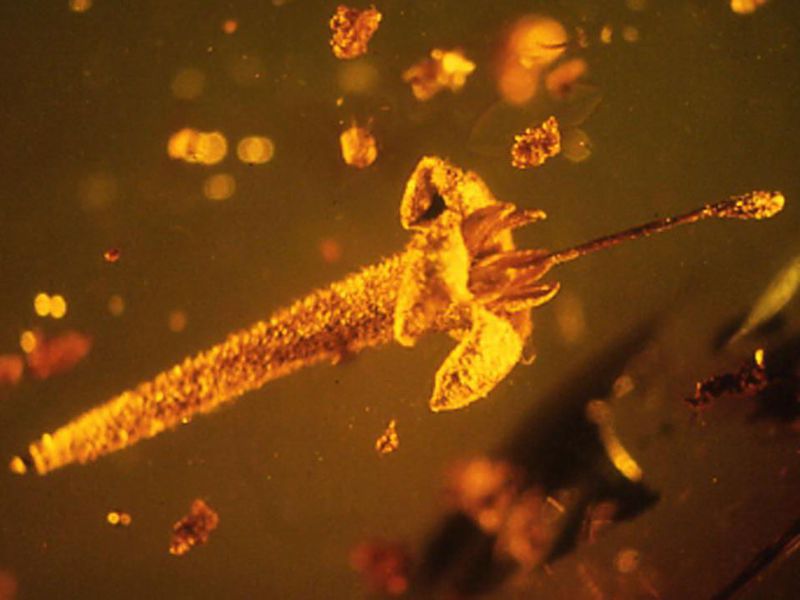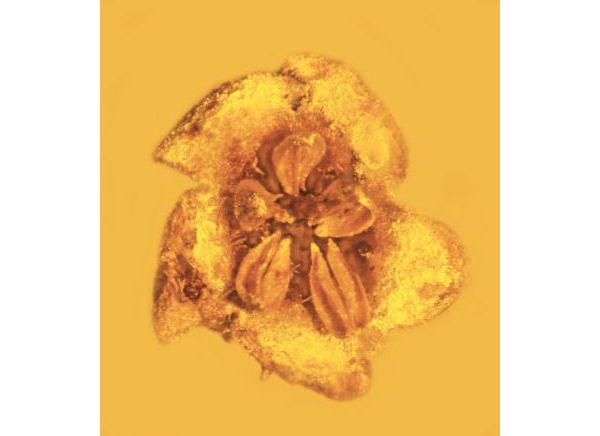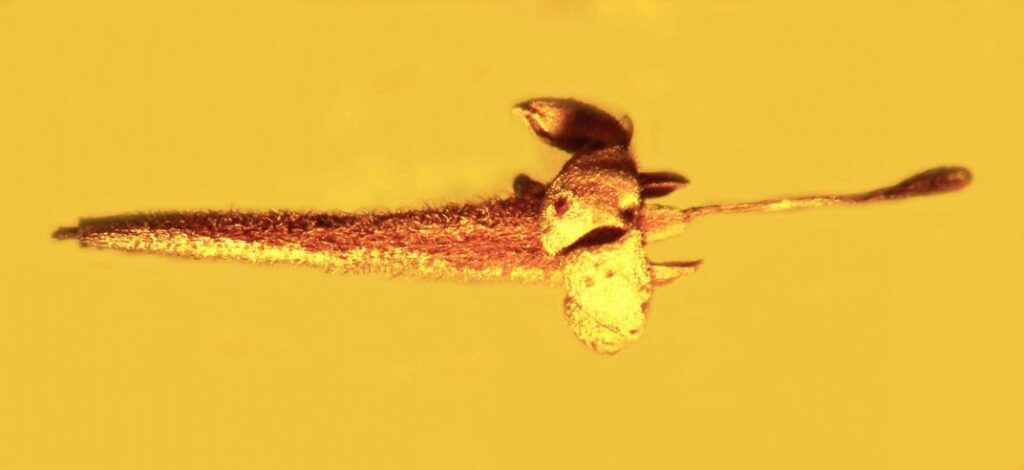New Species of Prehistoric Flower Discovered Preserved in Amber
The discovery of a new species of ancient flower beautifully preserved in amber indicates that ancestors of today’s daisies, mints, and tomatoes flourished in Caribbean jungles up to 45 million years ago.

The two flower fossils, found in the Dominican Republic, will help scientists understand how asterids — one of the world’s three major evolutionary groups of flowering plants — spread around the globe.
The amber formed sometime between 15 and 45 million years ago in a geological period known as the mid-tertiary, long before the Americas were joined by the Panama land bridge.
“From just this flower we are able to tell that this group of plants was present in the mid-Tertiary forest in the Caribbean — and not just this species, but that representatives from a large group of flowering plants, the asterids, had formed and been in full speciation mode,” said study co-author Associate Professor Lena Stuwe, director of the Chrysler Herbarium at Rutgers University.
The asterids include large families such as the Asteraceae (dandelions, sunflowers, asters, and daisies), the Lamiaceae or mint family (peppermint, rosemary, oregano and thyme), and the tomato family Solanaceae (potatoes, tomatoes, eggplants and chillies).
The new flower, described in the journal Nature Plants, belongs to the Loganiaceae family, a relatively small family of subtropical and tropical herbs, shrubs, trees, and vines.
Close-up of petals and pollen

The well-preserved flowers are trumpet-shaped, covered with fine hairs, and less than 10 millimeters long. Although not complete, the specimens include corollas, stamens, and a single filament-like style that protrudes from the mouth of the flower, providing the researchers with enough detail to classify them as part of the Strychnos genus.
Today the genus has around 200 species, including the strychnine bush, which is found in northern Australia.
“I think the flower [now known as Strychnos electri] was probably a vine (liana) and lived in a humid, tropical forest,” said study co-author Emeritus Professor George Poinar Jr, from Oregon State University.
Despite its excellent state of preservation, the researchers were unable to make out the colour of the flowers, although Dr. Stuwe said most Strychnos species have white or cream-coloured flowers.
She also said it was unclear whether the flowers had been pollinated.
“However, there are pollen grains on the outside of the petals so pollen has been shed and spread, [and is] typical of flowers that are insect-pollinated,” Dr. Stuwe said.
While the researchers do not know exactly what would have pollinated the fossil flowers, small bees commonly found in Dominican amber may be a possibility.
Delicate flowers trapped in resin

Amber is very good for all kinds of fossils, Dr. Poinar said, although flowers usually decay very quickly since the petals are fragile.
The flowers of Strychnos electri were encased in the resin of a large, abundant (and now extinct) tropical tree Hymenaea protera, which formed part of the forest canopy.
The fact they were small made it more likely they became fully covered and protected by the resin’s sticky mass, Dr. Stuwe said.
“Flowers from a lianous plant or otherwise could have fallen down or been blown around and landed in resin,” she said.
“As for leaves, branches, and fruits for plants, these are larger and often more firmly attached to the rest of the plant, and therefore are less likely to end up as loose fragments in amber pieces.”





